
Green Lantern is the name of several superheroes appearing in American comic books published by DC Comics. They fight evil with the aid of rings that grant them a variety of extraordinary powers, all of which come from imagination, fearlessness, and the electromagnetic spectrum of emotional willpower. The characters are typically depicted as members of the Green Lantern Corps, an intergalactic law enforcement agency.

Scouting in Iowa has a long history, from the 1910s to the present day, serving thousands of youth in programs that suit the environment in which they live.

The Lone Ranger is a fictional masked former Texas Ranger who fought outlaws in the American Old West with his Native American friend Tonto. The character has been called an enduring icon of American culture.

Neal Adams was an American comic book artist. He was the co-founder of the graphic design studio Continuity Associates, and was a creators-rights advocate who helped secure a pension and recognition for Superman creators Jerry Siegel and Joe Shuster. During his career, Adams cocreated the characters John Stewart, Man-Bat, and Ra's al Ghul for DC Comics.

General Mills, Inc., is an American multinational manufacturer and marketer of branded processed consumer foods sold through retail stores. Founded on the banks of the Mississippi River at Saint Anthony Falls in Minneapolis, the company originally gained fame for being a large flour miller. Today, the company markets many well-known North American brands, including Gold Medal flour, Annie's Homegrown, Lärabar, Cascadian Farm, Betty Crocker, Yoplait, Nature Valley, Totino's, Pillsbury, Old El Paso, Häagen-Dazs, as well as breakfast cereals under the General Mills name, including Cheerios, Wheaties, Chex, Lucky Charms, Trix, Cocoa Puffs and Count Chocula and the other monster cereals.
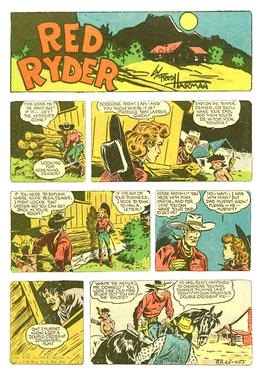
Red Ryder was a Western comic strip created by Stephen Slesinger and artist Fred Harman which served as the basis for a wide array of character merchandising. Syndicated by Newspaper Enterprise Association, the strip ran from Sunday, November 6, 1938, through 1965.
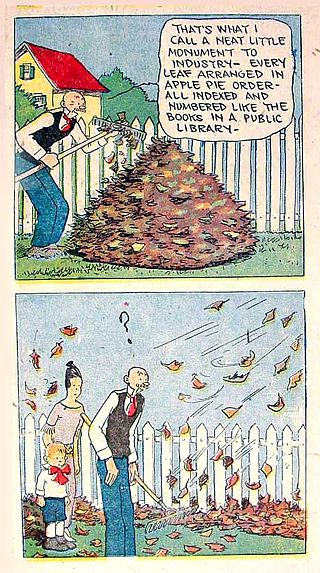
The Gumps is a comic strip about a middle-class family. It was created by Sidney Smith in 1917, launching a 42-year run in newspapers from February 12, 1917, until October 17, 1959.
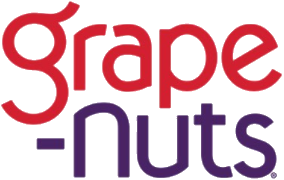
Grape-Nuts is a brand of breakfast cereal made from flour, salt and dried yeast, developed in 1897 by C. W. Post, a former patient and later competitor of the 19th-century breakfast food innovator Dr. John Harvey Kellogg. Post's original product was baked as a rigid sheet, then broken into pieces and run through a coffee grinder.

Chex is an American brand of breakfast cereal currently manufactured by General Mills. It was originally known as Shredded Ralston, first produced in 1936 and owned by Ralston Purina of St. Louis, Missouri, then later renamed Chex in 1950. The Chex brand went with corporate spinoff Ralcorp in 1994 and was then sold to General Mills in 1997. Rival cereal company Kellogg's has the rights to the Chex brand in South Korea and Singapore.

Shredded wheat is a breakfast cereal made from whole wheat formed into pillow-shaped biscuits. It is commonly available in three sizes: original, bite-sized and miniature. Both smaller sizes are available in a frosted variety, which has one side coated with sugar and usually gelatin. Some manufacturers have produced "filled" versions of the bite-size cereal containing a raisin at the center, or apricot, blueberry, raspberry, cherry, cranberry or golden syrup filling.
Jack Edward Jackson, better known by his pen name Jaxon, was an American cartoonist, illustrator, historian, and writer. He co-founded Rip Off Press, and some consider him to be the first underground comix artist, due to his most well-known comic strip God Nose.
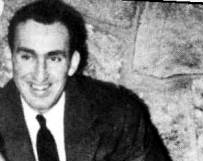
Creig Valentine Flessel was an American comic book artist and an illustrator and cartoonist for magazines ranging from Boys' Life to Playboy. One of the earliest comic book illustrators, he was a 2006 nominee for induction into the comics industry's Will Eisner Hall of Fame.

Magazine Enterprises was an American comic book company lasting from 1943 to 1958, which published primarily Western, humor, crime, adventure, and children's comics, with virtually no superheroes. It was founded by Vin Sullivan, an editor at Columbia Comics and before that the editor at National Allied Publications, the future DC Comics.

"Snowbirds Don't Fly" is a two-part anti-drug comic book story arc which appeared in Green Lantern/Green Arrow issues 85 and 86, published by DC Comics in 1971. The story was written by Dennis O'Neil and Neal Adams, with the latter also providing the art with Dick Giordano. It tells the story of Green Lantern and Green Arrow, who fight drug dealers, witnessing that Green Arrow's ward Roy "Speedy" Harper is a drug addict and dealing with the fallout of his revelation. Considered a watershed moment in the depiction of mature themes in DC Comics, the tone of this story is set in the tagline on the cover: "DC attacks youth's greatest problem... drugs!"
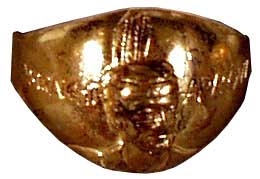
Howard Culver was an American radio and television actor, best known as hotel clerk Howie Uzzell during the entire run of TV's Gunsmoke. On radio he starred in the title role of the Western adventure series Straight Arrow, which aired on Mutual from May 6, 1948 to June 21, 1951.
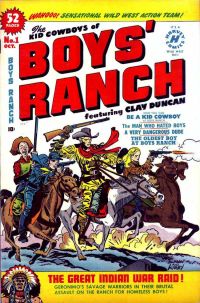
Boys' Ranch is a six-issue American comic book series created by the veteran writer-artist team of Joe Simon and Jack Kirby for Harvey Comics in 1950. A Western in the then-prevalent "kid gang" vein popularized by such film series as "Our Gang" and "The Dead End Kids", the series starred three adolescents—Dandy, Wabash, and Angel—who operate a ranch that was bequeathed to them, under the adult supervision of frontiersman Clay Duncan. Supporting characters included Palomino Sue, Wee Willie Weehawken, citizens of the town Four Massacres, and various Native Americans, including a fictional version of the real-life Geronimo.

Superhero comics is one of the most common genres of American comic books. The genre rose to prominence in the 1930s and became extremely popular in the 1940s and has remained the dominant form of comic book in North America since the 1960s. Superhero comics feature stories about superheroes and the universes these characters inhabit.

Western comics is a comics genre usually depicting the American Old West frontier and typically set during the late nineteenth century. The term is generally associated with an American comic books genre published from the late 1940s through the 1950s. Western comics of the period typically featured dramatic scripts about cowboys, gunfighters, lawmen, bounty hunters, outlaws, and Native Americans. Accompanying artwork depicted a rural America populated with such iconic images as guns, cowboy hats, vests, horses, saloons, ranches, and deserts, contemporaneous with the setting.

Bobby Benson and the B-Bar-B Riders is an old-time radio juvenile Western adventure program in the United States, one of the first juvenile radio programs. It was broadcast on CBS October 17, 1932 - December 11, 1936, and on Mutual June 21, 1949 - June 17, 1955.


















